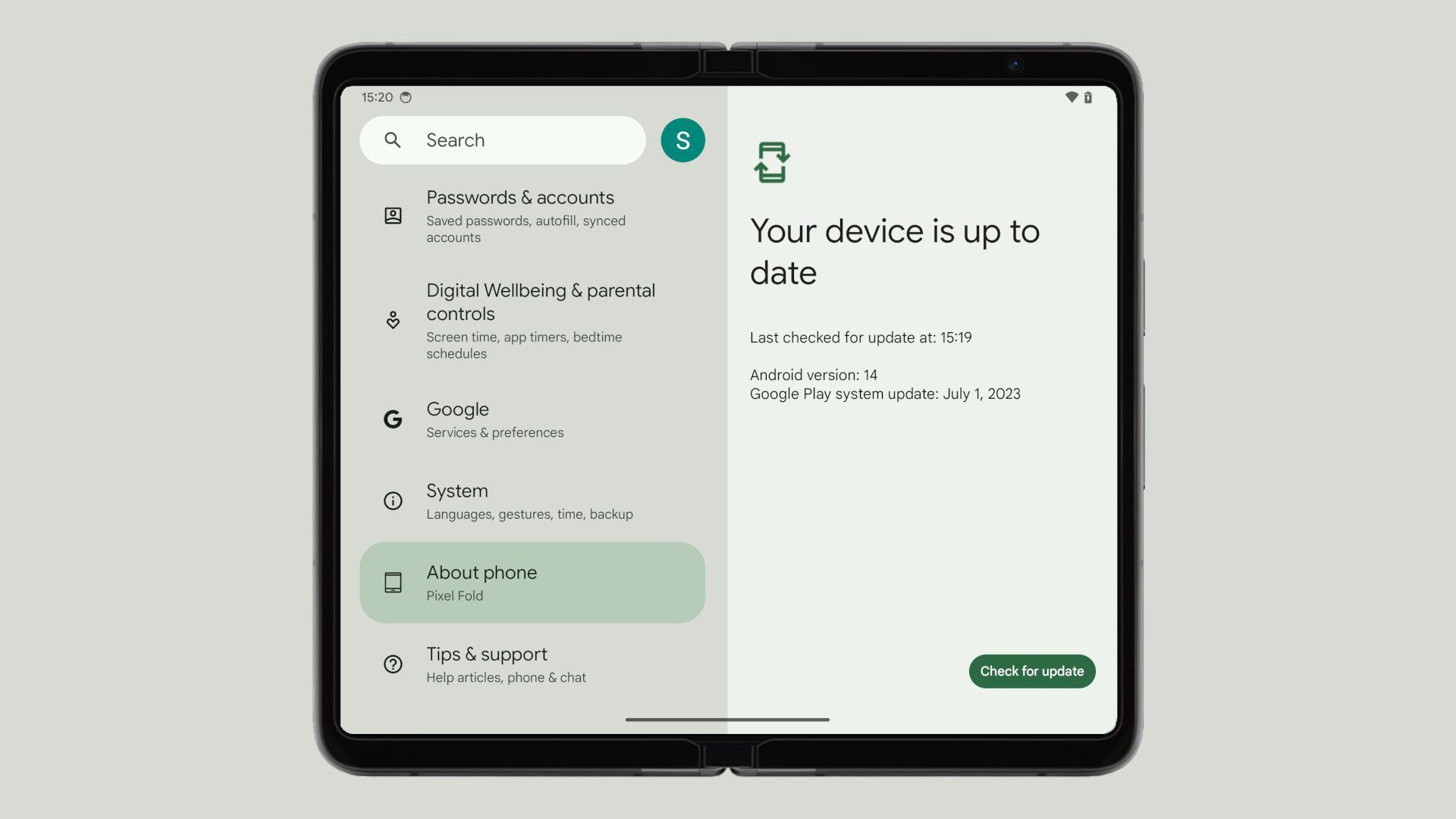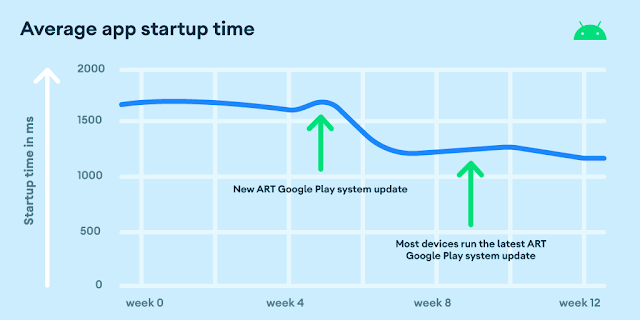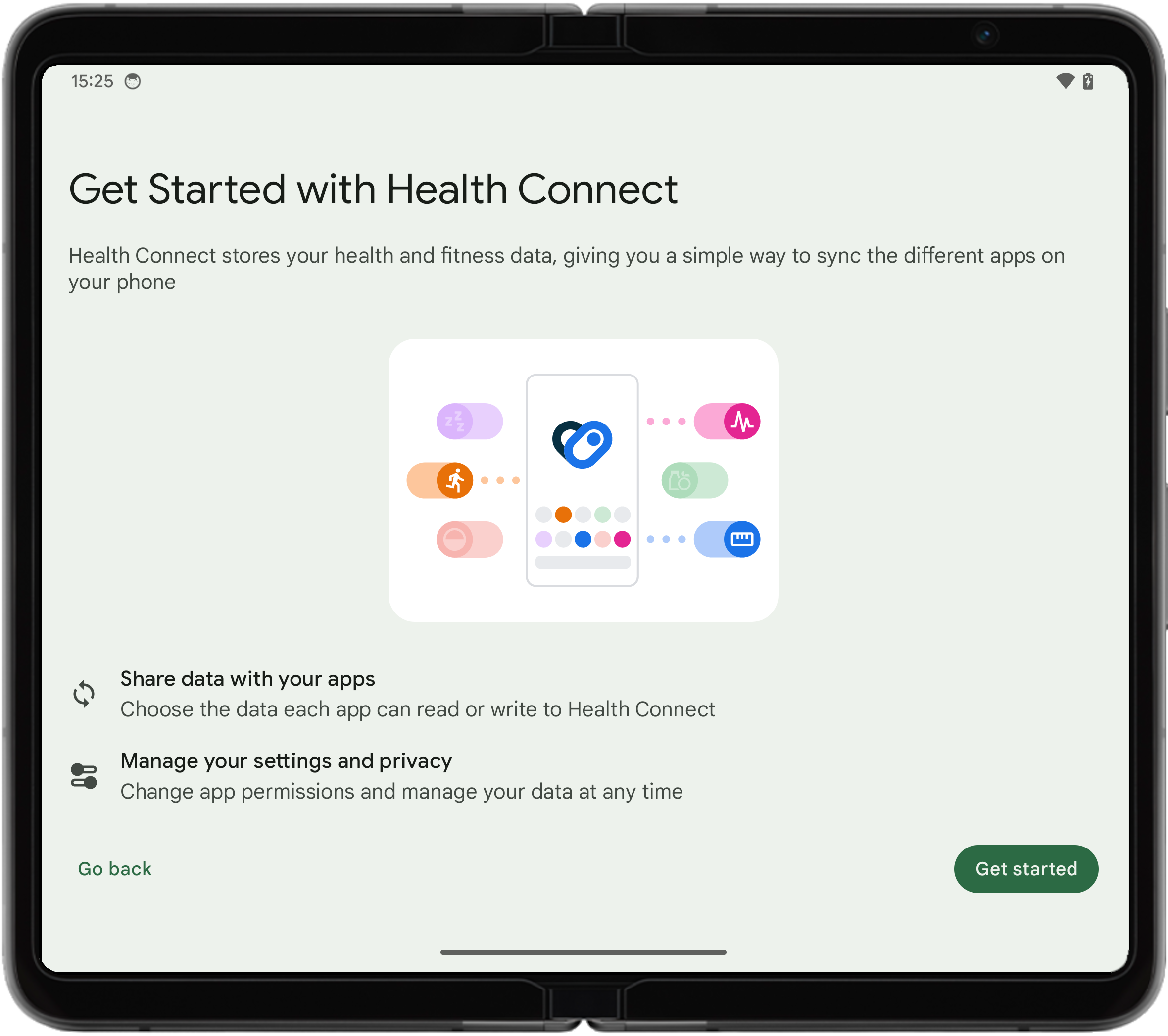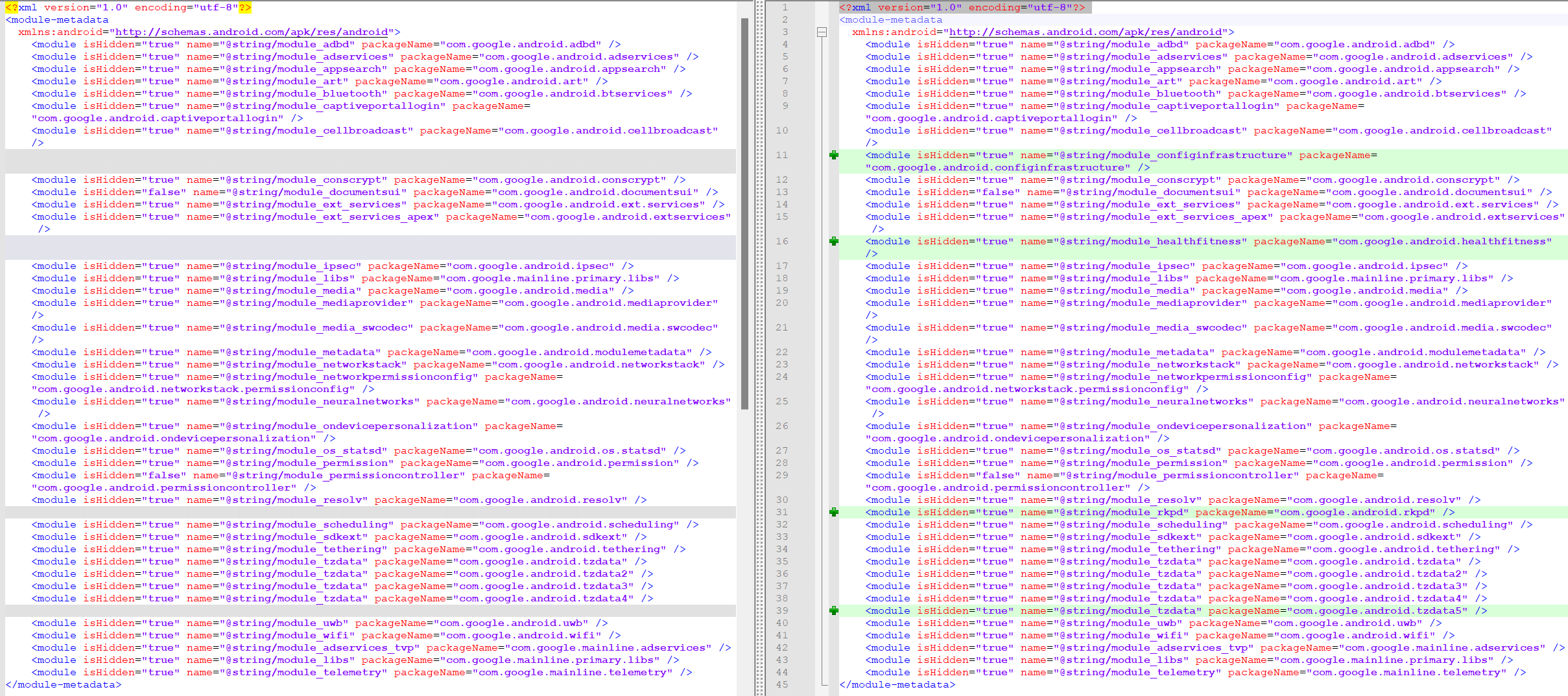Review sản phẩm
Những điều bạn nên biết về Project Mainline trong Android 14 và tương lai
Giới thiệu What you need to know about Project Mainline in Android 14 and beyond
Điều bạn cần biết về Dự án Mainline trong Android 14 và vượt ra ngoài.
#Thông tin cần biết về Dự án Mainline trên Android 14 và hơn thế nữa
Android 14 đã đem lại một cuộc cách mạng mới trong việc cập nhật các thành phần hệ thống trên các thiết bị Android. Dự án Mainline là một tính năng quan trọng trong phiên bản này, giúp người dùng nhận được các bản vá bảo mật và cập nhật hệ thống ngay lập tức, mà không cần phải chờ đợi nhà sản xuất thiết bị cung cấp.
Dự án Mainline cho phép Google cập nhật các thành phần hệ thống trực tiếp từ Google Play Store thay vì thông qua các bản vá của nhà sản xuất thiết bị. Điều này mang lại nhiều lợi ích cho người dùng, đặc biệt là trong việc bảo mật dữ liệu và giữ cho hệ thống hoạt động với hiệu suất tối ưu.
Trước đây, việc cập nhật hệ thống của các thiết bị Android thường phụ thuộc vào sự hỗ trợ từ nhà sản xuất và nhà mạng. Tuy nhiên, điều này thường gặp phải sự trễ trên thời gian và một số thiết bị đã không nhận được các bản vá quan trọng từ Google. Với Dự án Mainline, người dùng không cần phải lo lắng về việc thiết bị của họ có được cập nhật đầy đủ các bản vá bảo mật mới nhất hay không, vì các cập nhật sẽ được cung cấp trực tiếp từ Google Play Store.
Để hiểu rõ hơn về Dự án Mainline và cách nó hoạt động, hãy cùng tìm hiểu một số điểm đáng chú ý:
1. Tính toàn vẹn của hệ thống: Dự án Mainline đảm bảo rằng các thành phần hệ thống quan trọng như nhân hệ điều hành, trình điều khiển đồ họa và các thư viện lõi được cập nhật liên tục và an toàn. Điều này giúp duy trì tính toàn vẹn của hệ thống và ngăn chặn các lỗ hổng bảo mật tiềm tàng.
2. Quá trình cập nhật liên tục: Thay vì chờ đợi các bản vá từ nhà sản xuất thiết bị hoặc nhà mạng, người dùng có thể nhận được các cập nhật trực tiếp từ Google Play Store và cài đặt chúng ngay lập tức. Điều này giúp tiết kiệm thời gian và đảm bảo hệ thống luôn được cập nhật với các tính năng mới và các bản vá bảo mật quan trọng.
3. Sự tương thích: Dự án Mainline được thiết kế để tương thích với các phiên bản Android từ 14 trở đi. Điều này có nghĩa là ngay cả các thiết bị chạy Android 14 trở về trước cũng có thể nhận được các cập nhật và bản vá quan trọng từ Google Play Store, tăng cường tính tương thích và sự bảo mật cho người dùng.
4. Tiện lợi và linh hoạt: Cập nhật các thành phần hệ thống trực tiếp từ Google Play Store giúp dễ dàng quản lý các cập nhật và bảo mật cho người dùng Android. Không cần phải chờ đợi từ nhà sản xuất hoặc nhà mạng, người dùng có thể tự động cài đặt các bản vá mới nhất và tận hưởng các tính năng mới mà không gặp bất kỳ trở ngại nào.
Dự án Mainline đã mang đến một bước đột phá quan trọng trong việc cung cấp các cập nhật hệ thống cho các thiết bị Android. Người dùng không cần phải lo lắng về việc thiết bị của họ có được cập nhật đầy đủ và an toàn hay không, vì tất cả các cập nhật sẽ được cung cấp trực tiếp từ Google Play Store. Thêm vào đó, tính tương thích và sự tiện lợi của Dự án Mainline khiến cho việc cập nhật và bảo mật hệ thống trở nên dễ dàng và thuận tiện hơn bao giờ hết.
#QueenMobile – Đánh giá sản phẩm và mua ngay tại đây!
Bạn đang muốn tìm một thiết bị Android với tính năng Mainline tuyệt vời? Queen Mobile là địa chỉ mua sắm đáng tin cậy với một loạt các sản phẩm Android chất lượng từ các nhà sản xuất hàng đầu. Với việc chọn Queen Mobile, bạn có thể yên tâm rằng bạn sẽ nhận được các cập nhật hệ thống mới nhất và đáng tin cậy từ Google mà không cần phải lo lắng về việc thiết bị của mình sẽ không được cập nhật đầy đủ.
Với dịch vụ hỗ trợ chuyên nghiệp và đội ngũ nhân viên nhiệt tình, Queen Mobile cam kết mang đến cho bạn trải nghiệm mua sắm tuyệt vời. Bạn có thể tìm thấy một loạt các thiết bị Android phổ biến như Samsung, Google Pixel, Xiaomi và nhiều hãng sản xuất khác, với độ tin cậy và hiệu suất tốt nhất.
Đừng chần chừ nữa, hãy ghé thăm Queen Mobile ngay hôm nay để tìm hiểu thêm về các sản phẩm Android tuyệt vời và mua ngay một chiếc điện thoại hoặc máy tính bảng mới với tính năng Mainline đáng tin cậy. #QueenMobile #đánhgiásảnphẩm #muanhận
Mua ngay sản phẩm tại Việt Nam:
QUEEN MOBILE chuyên cung cấp điện thoại Iphone, máy tính bảng Ipad, đồng hồ Smartwatch và các phụ kiện APPLE và các giải pháp điện tử và nhà thông minh. Queen Mobile rất hân hạnh được phục vụ quý khách….
_____________________________________________________
Mua #Điện_thoại #iphone #ipad #macbook #samsung #xiaomi #poco #oppo #snapdragon giá tốt, hãy ghé [𝑸𝑼𝑬𝑬𝑵 𝑴𝑶𝑩𝑰𝑳𝑬]
✿ 149 Hòa Bình, phường Hiệp Tân, quận Tân Phú, TP HCM
✿ 402B, Hai Bà Trưng, P Tân Định, Q 1, HCM
✿ 287 đường 3/2 P 10, Q 10, HCM
Hotline (miễn phí) 19003190
Thu cũ đổi mới
Rẻ hơn hoàn tiền
Góp 0%
Thời gian làm việc: 9h – 21h.
KẾT LUẬN
Project Mainline là một dự án trong hệ điều hành Android 14 và các phiên bản tiếp theo, có mục tiêu là nâng cao trải nghiệm người dùng và tối ưu hóa quá trình cập nhật hệ thống. Điểm đáng chú ý trong dự án này là khả năng cập nhật các thành phần hệ thống thông qua Google Play Store, giúp người dùng tránh việc phải chờ đợi từ nhà sản xuất điện thoại phát hành bản cập nhật.
Với Project Mainline, Android sẽ phân chia các thành phần hệ thống thành các mô-đun nhỏ hơn, gọi là “modules”. Những modules này sẽ được Google cập nhật thông qua cửa hàng Google Play, mà không cần phải chờ đợi từ các nhà sản xuất điện thoại. Điều này cho phép các bản vá lỗi và cải tiến mới nhất được triển khai ngay lập tức trên các thiết bị Android.
Việc cập nhật trực tiếp từ Google Play giúp tăng cường tính bảo mật của hệ điều hành Android. Như vậy, người dùng có thể nhận được các bản vá lỗi an ninh một cách nhanh chóng, giúp giảm nguy cơ bị tấn công từ các hacker hoặc phần mềm độc hại.
Project Mainline cũng mang lại lợi ích lớn cho nhà phát triển ứng dụng. Việc cập nhật hệ thống dễ dàng hơn cũng đồng nghĩa với việc hỗ trợ các phiên bản Android mới nhanh chóng hơn. Điều này giúp tạo điều kiện thuận lợi cho nhà phát triển phát triển ứng dụng và đồng thời cung cấp trải nghiệm tốt hơn cho người dùng.
Tóm lại, Project Mainline trong Android 14 và các phiên bản tiếp theo là một bước tiến mới trong việc tối ưu hóa hệ thống và cải thiện trải nghiệm người dùng. Sự khả năng cập nhật linh hoạt, tăng cường tính bảo mật và hỗ trợ đa dạng các phiên bản Android mới là những điểm cần được biết đến về dự án này.
Google introduced Project Mainline in Android 10, modularizing OS components so feature and security updates could be delivered through Google Play instead of regular OTA updates. Android 10 launched with 12 supported Mainline modules, but in the latest release, that number has ballooned to 37 updatable modules. Here’s a look at how Project Mainline is changing in Android 14 and beyond.
First of all, why should you care about Project Mainline updates? Well, Google published a blog post this week revealing that the company was able to deliver key updates to ART (the Android Runtime) through Google Play thanks to Project Mainline. These updates not only delivered new core Java language features for developers and critical security fixes, but they also yielded app start-up improvements of what Google claims is up to 30% on some devices. Since ART became a Project Mainline module in Android 12, that means millions of devices got these improvements straight from Google.
Thanks to recent ART updates delivered through Google Play, some Android devices are seeing an up to 30% improvement in app start-up times.
Mainline is also responsible for delivering several new features to older devices. Android 13’s Photo Picker, for example, was backported to Android 11–12L thanks to a Mainline update.
That being said, I’m sure you’re wondering whether there are any new Project Mainline modules in Android 14 you should care about. Android 14 technically only introduces four new Project Mainline modules, if your definition of a Project Mainline module is an APK or APEX file that’s updatable through Google Play System Updates. That’s a step down from the 11 new modules added in Android 11, but to be fair, it’s expected for this number to go down as more components get added to the Mainline pile.
In any case, here are the four new Mainline modules:
- ConfigInfrastructure: Config Infrastructure provides an updatable DeviceConfig implementation. DeviceConfig is the API used by Google Play Services to remotely toggle flags that control various Android system features. For example, before Android 14 Beta 4, the availability of the split notification & ringtone volume sliders was controlled by a DeviceConfig flag.
- HealthFitness: This contains the Health Connect app and related APIs. Since Health Connect is now baked into the OS, you won’t need to download the app from Google Play anymore, plus it’ll work on devices without GMS. For users who have already downloaded the Health Connect app from Google Play, Google has begun migrating users over to the system version. HealthFitness also contains the backup and restore app, which may eventually enable cloud-based backups of Health Connect data.
- Remote Key Provisioner: This contains the Remote Key Provisioning app and system service.
- Time Zone Data (v5): Okay, this is not really a new module. Every version of Android has its own OS-specific Time Zone Data module. Android 14 is the fifth release that supports Mainline, so we’re now at version 5 of TZ data.
The list of Project Mainline modules can be found in an XML file called “module_metadata.xml”. This XML file is contained within the ModuleMetadata app, which is also responsible for providing the Google Play System Update version that you see in Settings.
Android 14 actually adds two additional APEX modules. APEX is one of two file formats supported by Project Mainline (the other being APK), but not all APEX modules are Project Mainline modules, and vice versa. Since these APEX modules aren’t updated through Google Play System Updates, I left them out of the previous list. Still, I think they’re worth bringing up:
- Device Lock Controller: Device Lock Controller contains the Mainline version of the Google app by the same name. The app in question is used by creditors to manage/lock down financed phones.
- Virt(ualization): This module contains the Android Virtualization Framework (AVF). AVF was actually introduced in Android 13, but it was an optional build at the time. In Android 14, however, the Virtualization module is now included by default when building AOSP. However, devices still need to specifically support AVF. Currently only Tensor-based Pixels support this feature, though future Qualcomm and MediaTek-based flagship devices may support AVF.
A comparison between the /system/apex directories in Android 13 QPR3 (left) and Android 14 Beta 5 (right). The /system/apex directory contains all APEX modules that are built by default when compiling AOSP.
The changes I’m about to list are technically to modules that already exist, but I think they’re worth bringing up anyway:
- Bluetooth is now updatable: Android 13 introduced an APEX module containing Android’s Bluetooth stack, but the APEX wasn’t marked as updatable at launch. Now, however, the module is able to be updated through Google Play System Updates. The Bluetooth module is still optional for OEMs to use, however.
- Cronet in Connectivity: Cronet is the Chromium network stack made available to Android apps as a library. This has been added under the existing Connectivity module.
- Wi-Fi is mandatory: I’ve heard that the Wi-Fi module is no longer optional for OEMs in Android 14.
Project Mainline in Android 15: What to expect
Finally, here’s a sneak peek at some of the new APEX/Project Mainline modules we may see in next year’s Android 15 “Vanilla Ice Cream” release:
- CrashRecovery: I have no idea what this will do. There’s an empty repository in AOSP for it, but that’s all that’s public so far.
- NFC: As I previously reported, Google is working on turning Android’s NFC stack into a modular system component. There’s no code for this in AOSP repositories yet, but a commit description from a Googler suggests it’ll happen.
- RemoteAuth(entication): It’s not entirely clear what RemoteAuth is for, but based on my initial reading of the code that’s public, it seems like it’ll let you use a UWB-enabled smartwatch as a “remote authenticator.” Perhaps this will let you use your smartwatch to unlock apps on your phone in the future.
- ThreadNetwork (part of Connectivity): Google is actively working on a Thread network stack for Android that’s decoupled from Google Play Services. Thread, if you aren’t aware, is a wireless protocol designed for Matter-enabled devices.
- UWB vendor HAL will become updatable: Android 13 introduced an (optional) UWB Mainline module, though only the system-side HAL was updatable. In Android 15, however, the vendor-side HAL will become updatable.
That’s my high-level summary of what’s new in Project Mainline in Android 14 and what to expect in Android 15. There are, of course, more technical, under-the-hood changes that I haven’t brought up, as well as potentially things I missed. Once Google updates the Project Mainline documentation following the launch of Android 14, we’ll know more about what else the company added in the upcoming release.
Xem chi tiết và đăng kýXem chi tiết và đăng ký
Khám phá thêm từ Phụ Kiện Đỉnh
Đăng ký để nhận các bài đăng mới nhất được gửi đến email của bạn.









